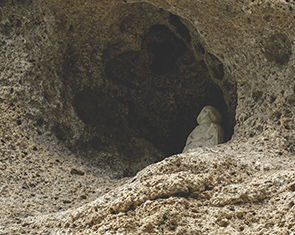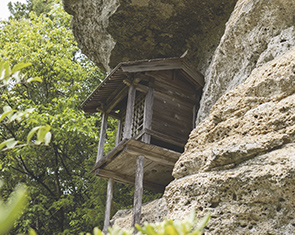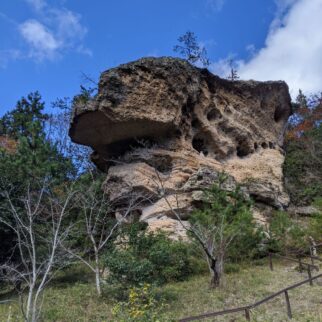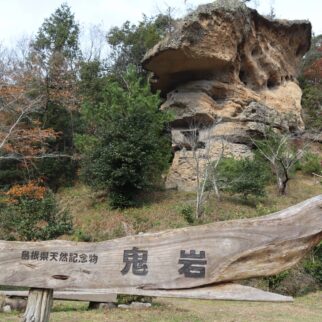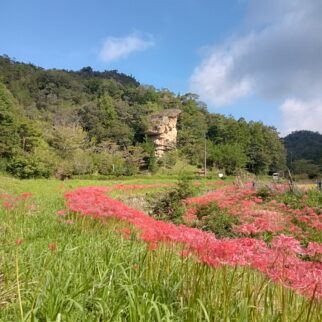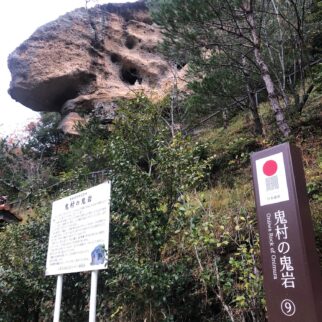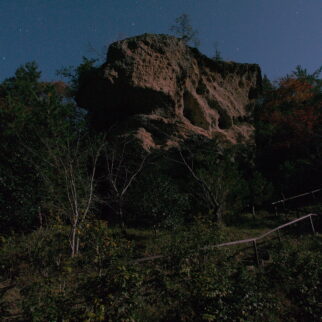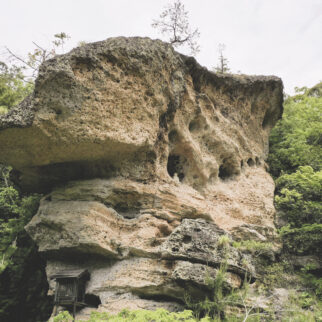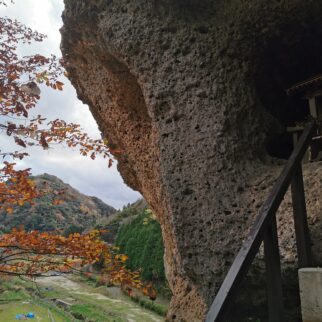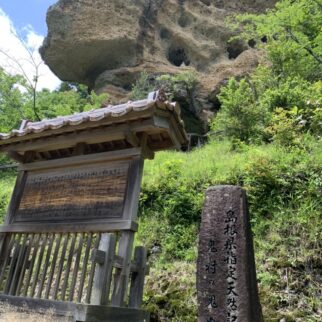 The blessings of volcanoes
The blessings of volcanoes
that have nurtured life
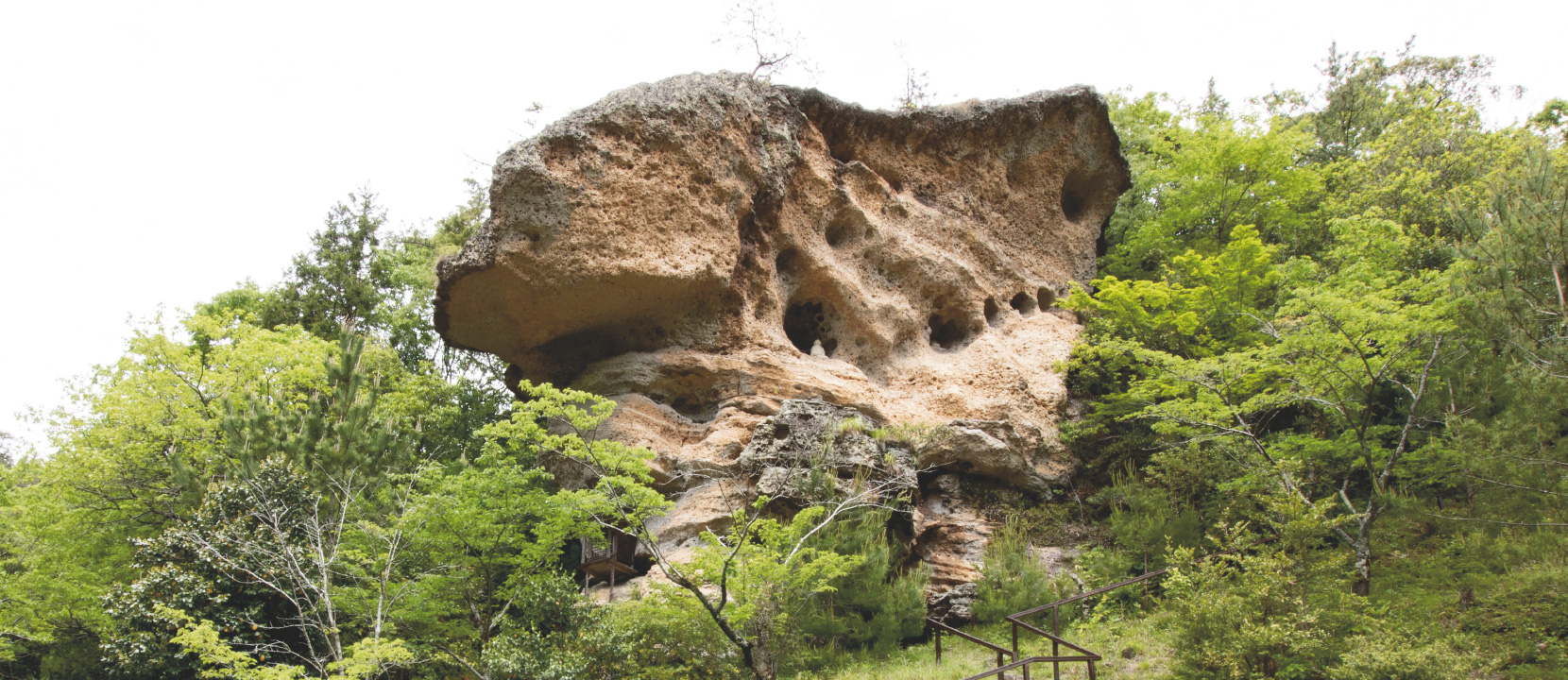
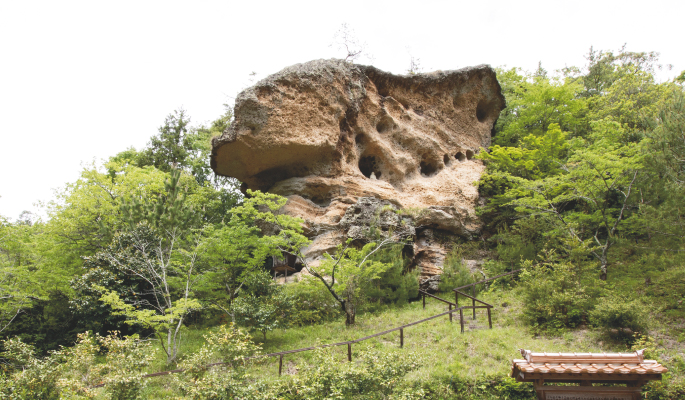
A giant rock associated with the legend of an ogre
Oniiwa Rock of Onimura
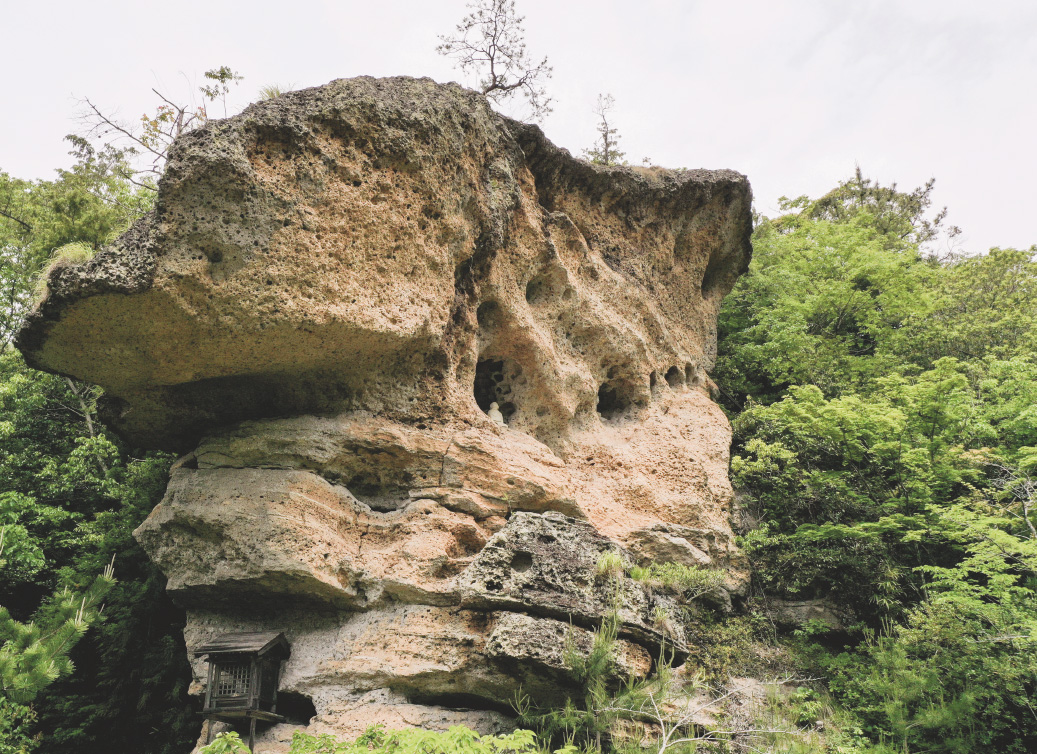
This huge rock that rises over the roadside spreads out at the top like an umbrella and has a row of five holes on its side that look like they have been scooped out. According to legend, the holes are the marks of an ogre’s fingers, and thus the name of the rock is Oniiwa (Ogre Rock). As the rock is composed of tuff formed by submarine volcanic eruptions, the action of the salts contained in it has accelerated the weathering, forming its peculiar shape and the holes in its side.
This kind of weathering can often be seen on the coast, but it is rare to see such a clear example like Oniiwa in a place so far from the sea, and it is believed that the rock contains a lot of salts that make it easy to dissolve. Nearby are the remains of the Onimura Mine, which once produced gypsum. It was mined from deposits formed in connection with the volcanic activity that created this rock.
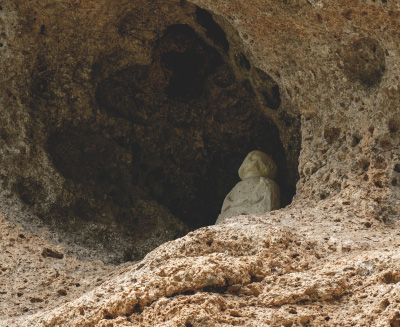
This huge rock that rises over the roadside spreads out at the top like an umbrella and has a row of five holes on its side that look like they have been scooped out. According to legend, the holes are the marks of an ogre’s fingers, and thus the name of the rock is Oniiwa (Ogre Rock). As the rock is composed of tuff formed by submarine volcanic eruptions, the action of the salts contained in it has accelerated the weathering, forming its peculiar shape and the holes in its side.
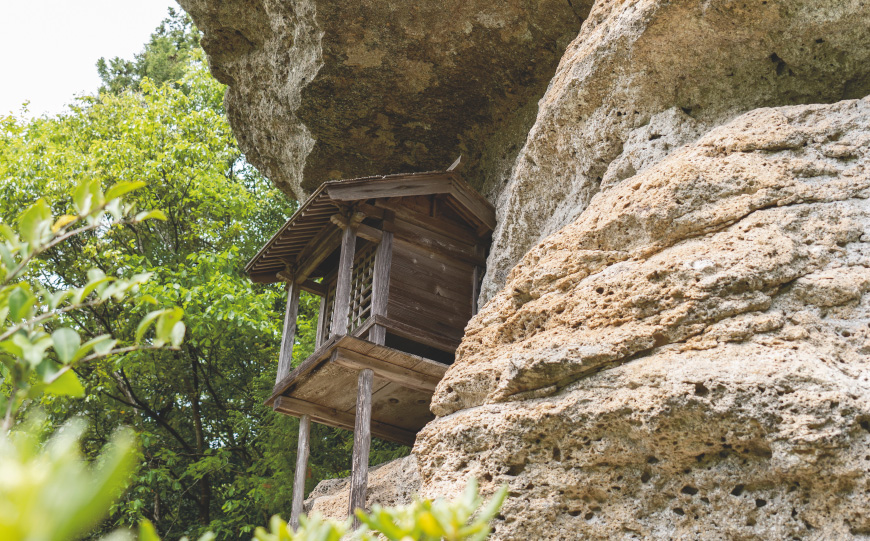
- 1Weathering by the action of salts
- Salt weathering is a phenomenon that occurs when water soaks into a rock and dissolves the salts contained within; then, when the water evaporates, magnesium sulfate, calcium sulfate, and other salts crystallize and destroy the surface of the rock.





